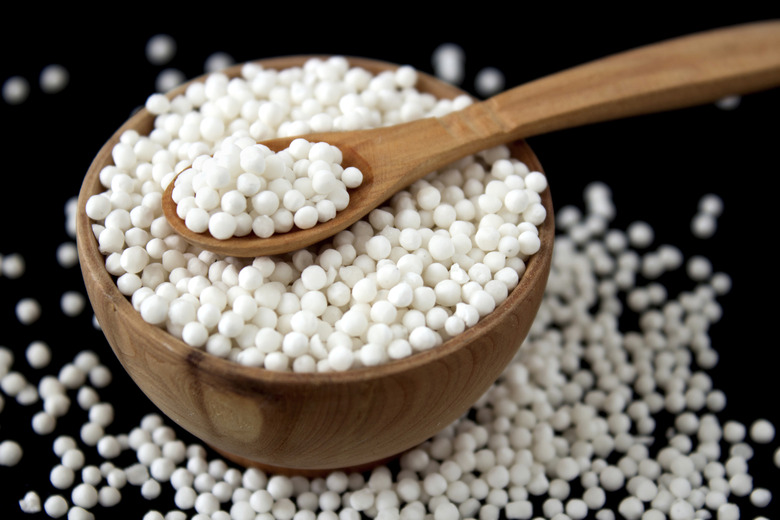How To Grow Tapioca
Tapioca, also called cassava (Manihot esculenta), is hardy in U.S. Department of Agriculture plant hardiness zones 8 through 11 but needs at least eight frost-free months to produce an edible root. The plant also requires morning sunlight, proper watering and light fertilizer to produce a large root. Although fully edible cooked, the root is poisonous raw.
Step 1
Giving tapioca plants enough space and light to mature is the first step in growing a successful crop. Space the plants 4 feet apart in a row, and leave 4 feet between rows. These plants grow up to 10 feet tall. So planting them in a spot where they can mature without shading plants that require sun exposure is necessary. Tapioca grows best in a site that gets morning sunlight and afternoon shade, especially in a hot climate.
Water Requirements
Step 1
Although tapioca plants can survive some drought, they have the best root crop when they receive water regularly throughout the growing season. Soak their soil weekly or, if it is especially hot and the ground dries fast, as often as needed to keep the soil from drying completely.
Step 2
- Giving tapioca plants enough space and light to mature is the first step in growing a successful crop.
- So planting them in a spot where they can mature without shading plants that require sun exposure is necessary.
Fertilizer Option
Step 1
Tapioca plants grow well even without additional nutrients, but a little fertilizer gives them a boost. An early, optional fertilizer application provides the plants with all the nutrients they need for the rest of the growing season. Two weeks after planting, sprinkle granular, 5-10-10 fertilizer onto the soil, using 2 cups of the fertilizer for every 30 square feet of soil surface. Gently work the fertilizer into the top 1 inch of the soil carefully so you do not disturb the plants, including their roots. Watering the site thoroughly until the soil is evenly damp completes the fertilizer application.
Possible Problem
Step 1
One factor that makes tapioca a simple crop for gardeners is that it is free of pest problems and rarely bothered by diseases. Within tapioca's hardiness zones, a cold snap kills it to the ground. If that happens, wait until spring, and then cut off the damaged foliage. If its new shoots don't emerge from the soil by mid-spring, then it is possible the cold snap killed the root. Dig up the old tapioca, and plant a new tapioca right away to take advantage of the growing season.
Step 2
- Tapioca plants grow well even without additional nutrients, but a little fertilizer gives them a boost.
- Two weeks after planting, sprinkle granular, 5-10-10 fertilizer onto the soil, using 2 cups of the fertilizer for every 30 square feet of soil surface.
Ironic but True
Step 1
Tapioca is loaded with cyanide, which is toxic to humans. Fortunately, peeling and cooking a tapioca root effectively removes and leaches the poison, making the root edible. Start by peeling off and discarding all of the root's purple-colored outer layer, keeping only the starchy, white root. Boil the peeled, white root until it is soft. Once during cooking, when the root starts to soften slightly, pour off the water, throw it away and use fresh water to finish the cooking process. When the root is done cooking, throw away the water. Never allow people or pets to eat or chew raw tapioca roots or any other part of the plant.
Step 2
- Tapioca is loaded with cyanide, which is toxic to humans.
- Fortunately, peeling and cooking a tapioca root effectively removes and leaches the poison, making the root edible.
